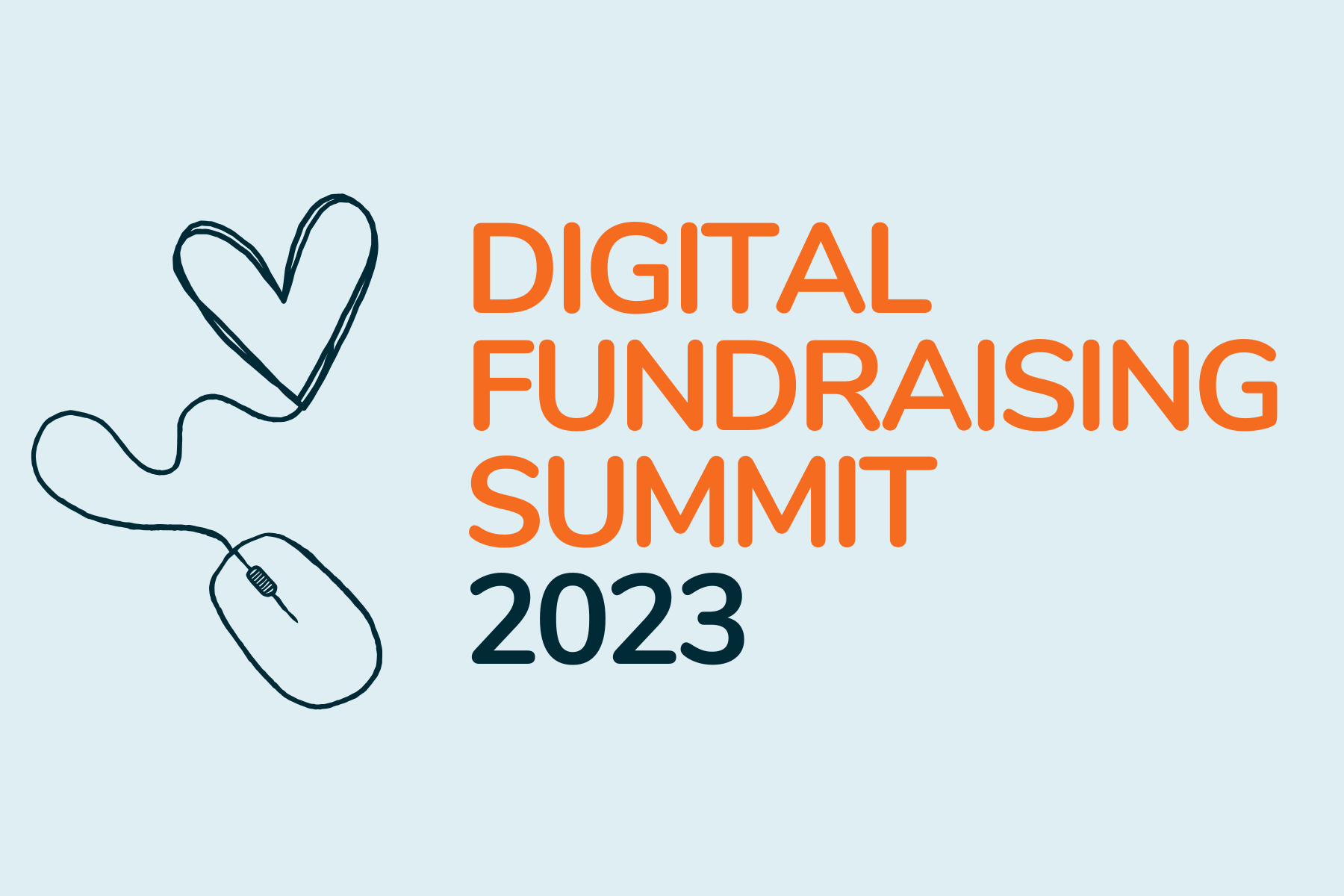Insights
INSIGHTS
All Topics
Top fundraising trends for 2024
03 Jan 2025by Ioan Marc Jones
We explore the fundraising trends set to define the charity sector in 2024 and examine the fundraising challenges and obstacles that charities might face
This past year proved another challenging year for the charity sector. The cost-of-living crisis provoked a cost-of-giving crisis, which meant charities were faced with less funds to deal with increase demand.
But, as we’ve seen so many times in the past few years, charities proved resilient, finding solutions in new fundraising methods, creative forms of service delivery, and an appetite for experimentation.
In 2024, charities will go ever further. The fundraising trends of 2024 show that successful charities will practice bravery: ditching old and tired social platforms, embracing novel tech such as artificial intelligence (A.I.), and finally taking full advantage of Gaming for Good. Charities will prove agile and flexible, especially in the realm of giving, retaining donors in spite of the economic crisis.
The fundraising trends of 2024 show a sector in flux. It shows a sector willing, and ready, to change and move with the times. So, without further ado, let’s look at some of the core trends for fundraising in 2024 and explore the best ways for charities to stay firmly ahead of the curve.
Before you dive in, feel free to check out our podcast on fundraising trends in 2024:
Skip to: Embracing flexible giving during the cost-of-living crisis
Skip to: Taking advantage of the phenomenon of ‘inverse giving’
Skip to: Moving away from the major social media platforms
Skip to: Using artificial intelligence in fundraising
Skip to: Accepting the unstoppable rise of Gaming for Good
Embracing flexible giving during the cost-of-living crisis
The cost-of-living crisis refers to a scenario in which the cost of everyday essentials, such as energy and food, rise faster than average incomes. Several developments have contributed to the cost-of-living crisis, including Russia’s invasion of Ukraine, the general fall-out from the pandemic, supply-chain issues relating to Brexit, a struggling currency and struggling productivity, and much more.
The cost-of-living crisis has led to a cost-of-giving crisis. The Charities Aid Foundation found, for example, that 90% of charities are concerned about rising living costs, with almost 60% of charities concerned about donors’ inability to donate. The problem of diminishing donations is compounded by the fact that charities have an increased service demand due to the cost-of-living crisis.
Charities can counter the lack of funding by embracing innovative solutions, solutions that help donors as they face the challenging economic circumstances of the next year. And that’s precisely what we expect to happen in 2024. We particularly expect charities to provide flexible giving options, allowing donors to tailor their donations depending on their economic circumstances at any period of time.
Digital payments expert PayPoint found that nearly two thirds (64%) of people who make regular donations to a charity would welcome the flexibility to change the amount they donated and the cadence of that donation. Flexible giving is exactly that: donations freed from strict rules, allowing donors to alter and change depending on their circumstances, often with a click of a button.
Flexible giving allows individuals to donate according to their means. The benefit to charities is even more obvious: flexible giving increases donations and improves retention. Consider, for example, that the cost-of-living crisis has led to people stopping donations, as they’ve had to prioritise other expenditure. Such people may not return to donating, even when the economy improves, simply because they don’t have time, may have forgotten, or for any number of other reasons.
Flexible giving allows donors to continue their relationship with the charity, still contributing a smaller or less regular sum, and then potentially increasing that sum in the future. Importantly, during stronger economic outlooks, flexible donors may go even further, donating more than the initial fixed donation amount, simply because they can. Flexible giving, in short, frees up the ability to minimise donation during hard times, maximise donations during prosperity.
Danny Vant, Client Services Director at PayPoint, explains why flexible giving is so important: “As people’s disposable income fluctuates, it’s natural that their ability to make charitable donations will also ebb and flow. So, providing them with practical digital solutions to simply change their monthly donation is an easy way for charities to facilitate increased donations in the long run.”
So charities in 2024 need to give donors flexible giving options. Charities can offer flexible giving in various ways, such as allowing donors to regularly revise their recurring rate, using digital payment technology to allow easy changes, or working with apps on the market.
It is even easier for donors to embrace flexible giving. Donors can open a Flexible Giving or a Toucan Account, which will help them to simplify, manage, and budget their donations. The platforms allow donors to donate in a way that works for them, from quickly making one-time donations to setting up automatic budgeted donations, giving them the flexibility to continue donating to causes.
Taking advantage of the phenomenon of ‘inverse giving’
There is no such thing as bad publicity, apparently. Inverse giving substantiates that maxim. Inverse giving is the phenomenon in which supporters donate to a particular cause due to negative headlines, according to fundraising platform Enthuse. It also refers to increased giving during moments of fiscal uncertainty, as Tim Sarrantonio discussed in The Chronicle of Philanthropy: “In times of economic recession and uncertainty, there is almost an inverse reaction by donors to be more generous in the beginning intensity of when you might see prices going up”.
In the 1980s, 1990s and early 2000s, giving in the U.K. appeared to be largely recession-proof. The value of donations increased in times of economic growth and did not fall at the same rate as the economy during periods of recession. Total giving was positively correlated with gross domestic product growth, but the positive relationship was driven by boom times (particularly the 1980s boom).
One reason that explains the phenomenon is that charities talk about how economic downturns affect users. They can mention, for example, the impact of the cost-of-living crisis on service users and describe the need for more funding. That in itself actually leads to increased donations, perhaps partly based on a shared connection: empathy created by the fact donors are also feeling the strain.
So inverse giving means a potential uptick during times of crisis, particularly if charities are able to share comms around the crisis. But the other form of inverse giving, as mentioned above, revolves around upticks in donations following adverse or negative headlines. Arguably the most well-known example of this form of inverse giving comes from the Royal National Lifeboat Institute (R.N.L.I.).
In 2021, the R.N.L.I. said it was “overwhelmed” by support after its operations in the English Channel were criticised by Nigel Farage, who accused the charity of being “a taxi service for illegal immigration.
An online crowd funding campaign was launched following Farage’s criticism by charity supporter Simon Harris. Harris initially sought to raise funds to buy a hovercraft for English Channel rescues, called ‘The Flying Farage’. But due to the impracticalities of using that particular form of vessel, which is usually used in mud flat areas, the money has been used to fund an in-shore vessel.
Indeed, as the Enthuse report demonstrated, supporting a cause was a huge motivation for many donors. The report found that giving in support of a friend, family member, or colleague was the primary motivation (70%), followed by solidarity (28%), closely followed by inverse giving (27%).
Charities need to ensure they follow guidelines around engaging with politics, but in 2024 we expect them to increasingly direct comms to take advantage and gain traction based on the latest headlines.
Moving away from the major social media platforms
Throughout the years, we’ve said the same thing: take advantage of social media, use the platforms that best meet your audience, do not spread yourself too thin, and so on. But now, for the first time, charities may actually want to focus less on social media. That, in itself, seems like a strange statement.
But social media is in decline, according to an intriguing article in The Atlantic. Facebook users have been jumping ship and advertisers are reducing spend. Twitter feels increasingly chaotic, but a downward trend preceded Elon Musk’s takeover. Musk, it seems, simply accelerated that decline.
TikTok, while growing, has not grown to the same degree as previous years and faces more concerning problems, such as the risk of countries banning the platform. And Instagram no longer looks like a social networking site, but more resembles an entertainment platform, like YouTube or even Twitch.
And that’s before we get onto the companies themselves. Big tech organisations are famously struggling, with mass lay-offs throughout 2023. Meta lost hundreds of billions of dollars, laid off 11,000 people, and the fantasy of the Metaverse seems like just that: a fantasy. Musk’s Twitter also had substantial lay-offs, but more concerning is the drastic drop in revenue from advertisers.
For many charities, the platforms themselves pose a serious concern. Many of the major social media platforms, over the past few years, seem to have become toxic. So the question is not just one of efficacy, but a wider issue around reputational and ethical concerns.
So, in terms of fundraising, the decline of social media is substantial. And we are likely to see charities pivot resources to new or existing revenue streams, moving away from socials. Or, alternatively, we will see charities focus on emerging spaces that might prove advantageous.
The age of social media is certainly not over, as some commentators have suggested. But it is changing and the major players are no longer automatic spaces for charities to fundraise.
Fundraising with generative artificial intelligence
A.I. has long occupied space in the human imagination. Prior to the birth of AI in the 60s or earlier, science fiction was already grappling with concepts of artificially intelligent robots. We all know a few of them: The Tin Man in Wizard of Oz, the humanoid robot Maria in Metropolis, or the War-Robot in Master of the World. The idea of A.I. developed in later science fiction, with machines taking on more and more human characteristics, culminating in robots that seemed indistinguishable from humans, as seen in Philip K. Dick’s Do Android’s Dream of Electric Sheep? or Ian McEwan’s Machines Like Me.
But fictional A.I. differs substantially from A.I. in real life. We use A.I. on a daily basis, often without knowing. One form of A.I. has become the most talked about tech of 2023: generative A.I. Generative A.I. depends on fast processing and intelligent algorithms, married with huge amount of data to produce results based on prompts. The tech learns automatically from patterns or features of the data and uses that information to improve processing and algorithms – and produce better results.
Generative A.I. has myriad applications. It can, among other things, generate text (ChatGPT and Jasper), images (DeepAI and DALL·E 2), audio (Soundraw and Jukebox), video (Synthesia and Pictory), and so much more. There are so many uses of generative A.I. platforms. Indeed, there is now an A.I.-dependent A.I. aggregator that works simply to compile the various A.I. applications and tools.
Generative A.I. can be used in various ways for fundraising. One way, for example, is its ability to churn out copy at an extraordinary rate. The content often lacks originality and not the most readable, with a generic and dull tone, but they can provide inspiration. Adding your own value and your own personality, and generally improving the way they read, you can transform A.I. content into something that will help your charity to raise awareness and raise funds.
Generative A.I. systems can improve Chatbots. The benefit of a Chatbot is that they’re constant, 24/7, always on and ready to respond. They can answer potential donor questions, direct them to relevant information, and even push them to donate. That will help you generally raise funds. And, what’s more, you can integrate the Chatbots with payment software, such as PayPal, so that you’re unlikely to lose donors along their user journey. That could result in much greater fundraising opportunity.
You can also leverage A.I. for routine and monotonous tasks, conserving both time and resources. Such tasks could encompass managing donations, updating donor databases, orchestrating consistent communications, or scanning social media for prospective donors. By streamlining tedious tasks, charities can allocate more time to creative endeavors, tasks that require the personal touch.
So generative A.I. will become a common trend. It will, first, ensure that you reach new audiences, helping you to produce more content, find new people, leverage analytics, and so on. And, on top of that, the tech allows charities to automate or optimise areas of fundraising. It’s no surprise that A.I. will prove one of the top fundraising trends of 2024 and will likely remain a talking point.
The unstoppable rise of Gaming for Good
We talked about Gaming for Good in 2021. We commissioned and published loads of articles covering how to connect with influencers, how to engage the streaming community, how to find gamers, how gamers can raise funds and build a campaign, and much more. We noticed more charities get involved in 2022 and published articles on the Gaming for Good landscape throughout that year, covering the best platforms that gamers should use, the charities paving the way, and so much more.
In 2023, Gaming for Good went mainstream. Take Gaming Without Borders, for example. The Gamers Without Borders event is a long series of tournaments taking place around the world involving teams of gamers. It launched in 2020 and now offers a £8.2m ($10m) prize for the winners, which they then donate to good causes of their choice.
The event shows the potential that Gaming for Good brings and shows how much it can raise when done well. And, of course, Gaming for Good is a form of fundraising that most charities have not yet embraced – so it might provide necessary funds during the tough times ahead. It is one option for charities hoping to diversify their fundraising streams, to find new avenues of fundraising.
But 2024 will be the year that all charities start to get involved, from the smallest to the largest. Why? Because it’s easy. Raising money with Gaming for Good is based on streaming. Gamers switch on consoles, pick games, and play. Share that game with an audience. Friends, other gamers, even the occasional nemesis will tune in to watch the action, usually on Twitch or increasingly YouTube.
Gamers can add donation buttons to streams and kindly ask the audience to donate. Perhaps the audience put down a bit of money when the gamer does something impressive, or even says something funny or enlightening. Perhaps the audience give money when the gamer makes a mistake, loses a life, or falls over, a form of sympathy fundraising that we certainly encourage.
Gaming for Good is a fun and simple way to raise money. Charities needing a new fundraising stream should look to their consoles, check out the best platforms, and start your gaming journey.
Embracing the future with Charity Digital
Successful charities learn lessons from the past, take advantage of the present, and look forward to the future. They will confront the economic issues with agility and flexibility, accepting the general changes to giving that we’ve been witnessing across the sector. They will review – and potentially divest – from social media, focusing on more bona fide fundraising options, such as email.
They will look at new opportunities, around Gaming for Good and A.I., and find the best ways to raise funds through novel means. And, importantly, they will constantly pivot and take advantage of any new trends that emerge, scoping out new ways to fundraise.
Let us know your thoughts below on any trends we may have missed. And please continue to keep up to date with our articles, listen to our podcasts, watch our videos, and learn from our webinars.
We hope your charity has a fruitful and impactful 2024.
Ioan Marc Jones
More on this topic
Related Content
Recommended Products
Recommended Products
Related Videos
Our Events
Charity Digital Academy
Our courses aim, in just three hours, to enhance soft skills and hard skills, boost your knowledge of finance and artificial intelligence, and supercharge your digital capabilities. Check out some of the incredible options by clicking here.


























